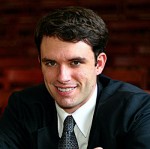Column Name
Title
November 1989 was a historic month. An iron curtain at the heart of Berlin that once separated the communist East from the capitalist West was torn down, ending nearly a half-century long standoff between two superpowers competing for resource control, economic influence, and the nuclear upper hand. For intellectuals in the West, the fall of the Berlin wall symbolized the triumph of free-market capitalism, the so-called “end of history,” the denouement of a protracted struggle between light and darkness, with the good guys emerging victorious.
Body
But while the Hollywood ending of history was being directed, victims in the deleted scenes of third world interventionism continued to suffer in obscurity.
This month marks the 20th anniversary of another event, one that lives not in the pages of our history books but in the hearts and minds of the marginalized masses of Latin America, those who hadn’t the privilege of adorning the rosy cloak of Western triumphalism to hide from the inhumanity and depravity which has dominated the region for centuries.
On November 16, 1989, just a week after history ended in Berlin, reality struck again in El Salvador. Six leading Jesuit priests and intellectuals, their housekeeper, and her daughter were brutally executed in the night at the hands of the U.S.-funded military junta occupying the state. The atrocity was not aberrational, but horrifyingly commonplace. As the human rights group Americas Watch reported, the massacre of the Jesuit priests in 1989, along with the assassination of Archbishop Romero in 1980, “bracket a tragic and violent decade in Salvadoran history. The fact that the Jesuit murders were carried out by officers and troops from the elite Atlacatl Battalion, created, trained, and armed by the United States, makes clear that U.S. assistance is not buying human rights protection for the people of El Salvador.”
These events simply do not fit into the traditional narrative of American power as historically exceptional, driven by the highest of ideals and noblest of motives, and boasting institutions committed to the spread of democracy and freedom. Among the figureheads of the corporate news media and mass marketed entertainment, these comfortable notions are internalized and redistributed for popular consumption. Altruism and the spread of democratic ideals become less a conviction than a commodity: imagined but not realized, patented but not practiced—packaged and sold to the bewildered herd of consumers.
Must artists too participate in these transactions? Can we not harness our critical instincts to see through the cynicism of this shrink-wrapped democracy, the same brand that saw utility in massacring Salvadoran dissidents, which today speaks of our noble mission in the Middle East where more than a million Iraqis have perished, prisoners from around the world continue to be tortured in Bagram, and white phosphorous shells manufactured in Arkansas rain on the children of Gaza? Our unparalleled freedoms do not give license for political apathy and inaction, but for critical engagement with the institutions that see “defense” in this depravity.
Here the artist’s role is crucial: any instance or performance of art in which we participate is not ideologically neutral, but inscribed in a mostly unacknowledged set of regulated understandings. Among these is the creed of neo-liberal individualism—that we encourage tolerance and multiculturalism insofar as we refuse to challenge global capitalism in its divine mission to starve, strangle, and slaughter. So long as we leave our moral compass in the hands of economic planners and military strategists, we are free to muse about the “transcendence” of art, dancing and singing as if the world were covered in roses and not blood.
Our success in becoming artists as fully engaged citizens—not easily swayed by the alluring rewards of conformity and obedience and not satisfied with the conveniences of half-hearted moralisms and political indifference—will be measured by our willingness to join in solidarity with the world’s victims, struggling against the powerful systems depriving them of decent lives, and by our creativity in finding ways to make our art emblematic of this struggle. In the words of writer Arundhati Roy:
“Painters, writers, singers, actors, dancers, filmmakers, musicians are meant to fly, to push at the frontiers, to worry the edges of the human imagination, to conjure beauty from the most unexpected things, to find magic in places where others never thought to look. If you limit the trajectory of their flight, if you weight their wings with society’s existing notions of morality and responsibility, if you truss them up with preconceived values, you subvert their endeavor.”





